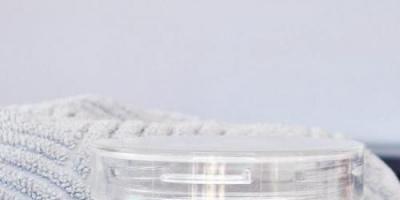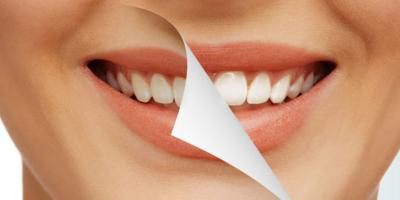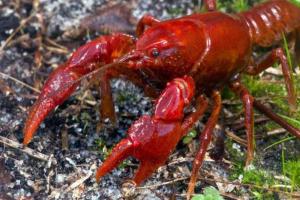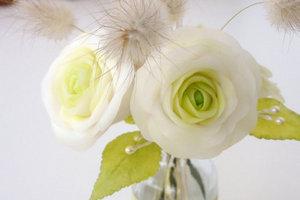Balanitis is a disease characterized by inflammation of the glans penis. Inflammation usually also extends to foreskin , and then the disease is called balanoposthitis. It is a very common inflammatory condition in men and can occur with some skin conditions (eg, ), as well as due to traumatic causes, for example, irritation with urine, smegma, clothing, or various bacteria, viruses, against the background of a decrease in immunity, diabetes, and also when hygiene standards are not observed as a prevention of balanitis.
There are several types of balanitis:
- traumatic balanitis manifests itself in the formation of cracks, redness and swelling, after coital or other trauma;
- balanitis, which arose as a result of irritation from the accumulation of smegma, urine, exposure to detergents, is manifested by swelling of the glans penis and its redness;
- infectious balanitis.
The latter type, in turn, is divided into several types depending on the infection:
- candida is a manifestation of the urogenital in men, and occurs as a result of sexual intercourse with an infected partner, however, it can also occur as a result of taking antibiotics, as well as in patients suffering from diabetes , cachexia . It is characterized by swelling and redness of the glans penis, with slight peeling, spots of various sizes may form. There are curdled discharge with an unpleasant odor, burning and itching of the head and foreskin of the penis;
- chlamydial which usually accompanies chlamydial urethritis ;
- mycoplasma most often develops simultaneously with mycoplasmal urethritis ;
- trichomonas usually occurs in men who have a long foreskin, and manifests itself in the form of erosion and erythema of the glans penis;
- circinary balanoposthitis manifests itself in the formation of large smooth bright red spots on the head of the penis, and often accompanies chlamydial infection ;
- xerotic balanitis it is also a manifestation of chlamydial infection, as well as, and is characterized by peeling of the head and its increased dryness, as well as itching;
- anaerobic balanitis(gardnerella-associated balanoposthitis), caused by anaerobic gram-negative bacteria, manifests itself in the form of erosion and swelling of the foreskin, a sticky coating on the head and an unpleasant odor;
- herpetic balanitis manifested in the formation of a herpetic rash on the glans penis.
Special mention should be made allergic balanoposthitis, which are manifestations of genital allergies. They are characterized by the appearance of swelling and itching of the skin, spots, rashes. Often occur after use, local.
Causes of balanitis
The causes of balanitis, in general, are not diverse. The main reason for the onset and development of the inflammatory process is the accumulation of smegma under the foreskin, where the infection develops.
Local factors of balanoposthitis include:
- at urethritis or other infectious diseases, pus is released from the urethra, which leads to inflammatory processes and balanitis;
- non-observance of hygiene rules, which leads to the accumulation of smegma under the foreskin, in which the infection develops;
- chronic irritation of the glans penis with urine, which is typical for patients with diabetes mellitus;
- coital or other injury excessive masturbation (traumatic balanitis);
- skin exposure due to radiation therapy.
The infectious factors for the occurrence of balanitis include various viruses , mushrooms , bacteria , for example, yeast fungi, mycoplasmas, streptococci, staphylococci and others. Often balanoposthitis is the result of a complication -, gonorrhea , . Also, the cause of balanoposthitis are skin diseases such as, psoriasis , contact dermatitis , erythroplasia of Queira that appear on the skin of the penis. In addition, among the causes of balanitis, doctors distinguish genetic and autoimmune factors.
Symptoms of balanitis
The symptoms of balanoposthitis are very diverse, and depend on the type of the disease itself. Local symptoms of balanitis are as follows:
- swelling and redness of the glans penis;
- erythema of the foreskin;
- burning and itching;
- purulent discharge from the opening of the foreskin with an unpleasant odor;
- dryness and irritation;
- the appearance of ulcers, erosions on the head of the penis;
- nodular rash;
- the appearance of cracks and crusts;
- pain when opening the head and during intercourse;
Common symptoms of balanitis are:
- general malaise, weakness;
- increase, including in the groin;
- rashes in the oral mucosa.
If you delay the treatment of balanitis, then ulcers may appear, which are accompanied by painful sensations when walking and urinating. As complications of balanitis, inflammation of the lymph nodes of the penis can develop, as well as penis.
Diagnosis of balanitis
The diagnosis of "balanitis" is made on the basis of laboratory and clinical tests. The doctor prescribes tests for diseases that are sexually transmitted. Externally, balanitis is detected without difficulties, it is more difficult to find out the cause of its occurrence. To do this, the patient undergoes a serological test for syphilis, a bacterioscopic examination for trichomoniasis and gonorrhea, an examination for, PCR for fungi that cause candidiasis, and for anaerobic flora. In addition, a consultation with an allergist and a blood test for sugar levels are prescribed.
Treatment of balanitis
 Treatment depends on the cause and stage of the disease and is carried out under the supervision of a urologist. Mandatory activities are daily washing with warm water and soap of the penis. Creams may be used to reduce irritation during intercourse. If the diagnosis of balanitis reveals the cause, then the efforts of doctors are aimed at treating the underlying disease and the symptoms of balanitis. Usually, the treatment of balanitis is limited to twenty-minute cool baths with a solution and potassium permanganate
, or with saline, which are carried out 2-3 times a day. After the bath, the glans penis and the foreskin are lubricated, garamycin
, as well as preparations containing fish fat
. Anaerobic balanitis treated, with mycoplasmal balanoposthitis large doses are prescribed tetracycline
. Treated with corticosteroid ointments xerotic balanitis. At the same time, a course of antifungal or antibacterial drugs is prescribed.
Treatment depends on the cause and stage of the disease and is carried out under the supervision of a urologist. Mandatory activities are daily washing with warm water and soap of the penis. Creams may be used to reduce irritation during intercourse. If the diagnosis of balanitis reveals the cause, then the efforts of doctors are aimed at treating the underlying disease and the symptoms of balanitis. Usually, the treatment of balanitis is limited to twenty-minute cool baths with a solution and potassium permanganate
, or with saline, which are carried out 2-3 times a day. After the bath, the glans penis and the foreskin are lubricated, garamycin
, as well as preparations containing fish fat
. Anaerobic balanitis treated, with mycoplasmal balanoposthitis large doses are prescribed tetracycline
. Treated with corticosteroid ointments xerotic balanitis. At the same time, a course of antifungal or antibacterial drugs is prescribed.
If the cause of the disease is phimosis, then surgical treatment of balanitis is performed, namely, circumcision of the foreskin of the penis.
Also appointed physiotherapy procedures, namely: ozone therapy, heliotherapy, thermomagnetotherapy, electropheresis, infrared laser therapy, UHF inductothermy of the penis, which have an anti-inflammatory effect and help eliminate inflammation.
The doctors
Medications
Prevention of balanitis
The main preventive measures are strict adherence to hygiene rules and the treatment of phimosis and other diseases that can lead to balanitis. The penis should be washed 2 times a day, as well as before and after sexual intercourse, with warm water, opening the head and cleaning it. Preventive measures also include the treatment of diabetes, protected sex, proper treatment. When the first signs of the disease are detected, an urgent need to contact a urologist.
Complications of balanitis
Complications of balanitis can be phimosis and myatal stenosis, which manifests itself in the narrowing of the external opening of the urethra, which leads to urination disorders, as well as to,. Also, if balanoposthitis is not treated, then a decrease in the sensitivity of the penis is possible, which leads to a decrease in the quality of sexual life. In the case of the transition of the inflammatory process to the urethra, urethritis may begin. Some forms of balanitis lead to necrosis of the head of the penis.
Diet, nutrition with balanitis
List of sources
- Zabirov K. I. Modern aspects of the problem of balanoposthitis / K. I. Zabirov, I. I. Derevyanko, N. V. Marchuk // Consilium medicum. - 2004;
- Skin and venereal diseases. A Guide for Physicians / Ed. Yu. K. Skripkina. - M., 1995;
- Rodionov A. N. Fungal diseases of the skin / A. N. Rodionov. - SPb., 2000.
Various infectious and inflammatory diseases of the penis, namely balanitis (inflammation of the head) and balanoposthitis (inflammation of the frenulum and foreskin) are quite common in men. Both of these ailments usually occur together. At the same time, balanoposthitis is diagnosed. This disease is the main reason why the frenulum on the head hurts. Pathology is treated in many ways, ranging from traditional medicine and physiotherapy to surgical circumcision of the foreskin. We will not only describe the causes and symptoms of the disease, but also tell you what to do if the frenulum on the head hurts.
Causes of pain and inflammation of the frenulum
If the bridle hurts in men, then among the reasons for this pathological process it is worth mentioning the following:
- non-compliance with the rules of intimate hygiene;
- various mechanical damage and injuries of the bridle;
- sexual viral infections (herpes, papillomavirus).
The most common cause of inflammation of the frenulum of the penis is pathogenic microorganisms (viruses, bacteria and fungi). The provoking factors for the onset of the disease are:
- wearing tight and tight underwear that injures the delicate tissues of the organ;
- allergic dermatitis resulting from the use of certain means for intimate hygiene;
- an anatomically short frenulum will often be injured during intercourse, as a result of which infectious agents can penetrate microcracks;
- sometimes the frenulum hurts against the background of diabetes mellitus (at the same time, an increased concentration of sugar is observed in the urine, which serves as a favorable environment for the development of infection);
- with obesity, there are problems with metabolism, which causes a decrease in immunity;
- stress, overwork and hypothermia, chronic diseases, smoking and alcohol - all this leads to a weakening of the protective forces and the development of the inflammatory process.
What happens during inflammation?

Outwardly, inflammation of the frenulum manifests itself in the form of reddening of the skin, the formation of loose or dense whitish nodules or formations of a pale red hue. White or purulent discharge appears from under the foreskin.
The inflammatory process leads to the fact that during urination a man is worried about:
- itching and burning in the head of the penis;
- pain sensations;
- difficult urination.
Redness of the head and irritation of the frenulum are not the only symptoms of pathology. With the appearance of erosive processes, the organ will hurt more. Against the background of irritation, excitation increases, premature ejaculation and increased erection occur.
Sometimes inflammation of the frenulum of the foreskin leads to a continuous swelling of the organ, inflammation of the inguinal lymph nodes and the formation of cracks and phimosis. In especially severe cases, tissue necrosis of the organ occurs, accompanied by gangrene and general intoxication.
Medical treatment of inflammation

If the frenulum on the head is inflamed, drug treatment is selected depending on the cause of the disease:
- If there are papillomas on the organ, Podophyllin ointment is prescribed to remove them. It is applied twice to the affected areas for three days. Then they take a break for four days and apply the ointment again. Duration of therapy - no more than 1.5 months.
- To treat candidal balanoposthitis, Clotrimazole, Miconazole or Econazole ointments are prescribed. Means are applied to diseased areas twice a day for three days. With a strong inflammatory process, the hormonal hydrocortisone is additionally prescribed.
- In diabetes mellitus and the chronic course of the pathology, the antifungal drug Fluconazole is necessarily used in complex therapy.
- If a man has not only a red frenulum on the head, but also erosive processes have begun, the doctor will prescribe Metronidazole or Amoxicillin with clavulanic acid. They are taken three times a day. This treatment continues for a week. Clindamycin ointment is applied topically until symptoms disappear.
- When determining the sensitivity of the infection that provoked the disease to certain antibacterial agents, other drugs may be prescribed, for example, Erythromycin.
Important! A good effect in the treatment of this pathology is achieved with the use of complex preparations. One of them is Akriderm ointment. It contains an antifungal component, an antibiotic and a corticosteroid. The ointment has an anti-inflammatory effect and is effective in the fight against staphylococci, streptococci and Trichomonas.
Physiotherapy

If a man’s frenulum hurts, then the doctor may prescribe physiotherapeutic methods of treatment. They have a tonic effect, eliminate pathogenic microorganisms and have an anti-inflammatory effect. With this pathology, the following procedures are used:
- electrophoresis with antibacterial agents;
- ozone therapy (in this case, the ozone-oxygen mixture is administered rectally);
- galvanization on the urethra;
- surface heating using magnetotherapy;
- laser treatment with the simultaneous use of topical preparations.
Thanks to physiotherapeutic procedures, it is possible to sanitize foci of chronic infection, improve blood microcirculation and relieve swelling of tissues.
Phytotherapy

At home, a man can treat this disease with the help of medicinal herbs and fees:
- Fresh, washed and crushed plantain leaves are applied to the affected areas for ½ hour. Such compresses are repeated every four hours for a week.
- A good anti-inflammatory agent is a decoction of oak bark. 30 grams of bark is poured with boiling water and boiled over a fire for 1/3 hour, then it is infused for an hour and filtered. The resulting product is used for baths and washings of the organ.
- Peel off the fleshy leaves of aloe and apply them to the affected areas. It is advisable to take the old leaves of the plant, since they contain the most healing components. Before use, the cut leaf should lie down for 2-3 days in the refrigerator. Such compresses are done several times a day.
- It helps well with balanoposthitis a compress from a mixture of St. John's wort, chamomile and sage. The listed herbs are mixed in equal amounts. 30 grams of the mixture is poured with half a liter of boiling water. After filtering, a compress is prepared, which is applied to the organ for a quarter of an hour.
- With erosive processes, a compress of olive oil and calendula helps. To prepare it, 30-40 grams of the plant is poured with olive oil and insisted in the dark for a couple of weeks.
Advice! If you eat garlic, onion, ginger, cayenne pepper, then you will achieve the effect of natural antibiotics. However, they can be used only in the absence of contraindications from the gastrointestinal tract.
Prevention methods
For preventive purposes, it is useful to keep the genitals clean by washing them with warm water before going to bed and after each act of defecation. Also, do not wear tight and narrow underwear made of synthetic fabrics.
A man must cure all chronic sexual infections that weaken local immunity. It is useful to strengthen the body's defenses by eating right, playing sports. It is also important to give up bad habits.
Inflammatory processes of the foreskin are a common occurrence that can be repeated many times during a man's life. Sometimes it is almost asymptomatic, but in other situations it causes a lot of health problems. In any case, it is impossible to ignore the pathology in order to prevent the growth of inflammation.
Description of the disease
Inflammation of the foreskin is a very common disease that affects not only adult men, but also boys aged 3-7 years, and often it is combined with an inflammatory process in the glans penis. The tandem of diseases such as fasting and balanitis is called balanoposthitis by physicians. Concomitant symptoms of this disease may vary depending on the form of the disease and the prerequisites for its occurrence.
There are chronic and acute inflammation of the foreskin. The exacerbation phase is characterized by the most striking symptoms, due to which the pathology is divided into three types: simple, erosive and purulent balanoposthitis.
Simple inflammation is the safest and easiest type of disease in which the foreskin suffers.
It is characterized by the following features:
- burning and itching, which are aggravated by contact with underwear and during urination;
- swelling and wrinkling of the glans penis;
- redness of the tissues of the head and foreskin.
Erosive balanoposthitis is also characterized by a number of signs:
- the formation of small erosions on the head of the penis;
- the appearance of a red film, which bursts after a while, leaving a painful red spot in its place.
The third type of disease - purulent - is the most severe.
It is characterized not only by local signs of the disease, but also by a general deterioration in the condition:
- fever, general weakness;
- the foreskin is “adorned” with purulent abscesses and bleeding sores. In this case, the death of the skin of the foreskin is observed;
- phimosis often appears - a phenomenon in which it is impossible to expose the head of the penis.
Symptoms manifest themselves depending on the causes of the pathology and require different approaches to treatment.
Causes of the disease
Inflammatory processes in the region of the head and foreskin occur due to infectious and non-infectious diseases.
Most often, the foreskin is susceptible to infection with viruses of the following diseases:
- syphilis;
- gonorrhea;
- chlamydia;
- trichomoniasis;
- mycopalsmosis;
- genital herpes;
- candidiasis;
- coli;
- staphylococcus.
In most cases, sexually transmitted diseases lead to inflammatory processes. They provoke pathological conditions in many organs of the male reproductive system, including those affecting the foreskin. These pathologies can provoke redness and swelling of the tissues of the foreskin, frenulum and head of the penis.
However, there are also non-infectious prerequisites for the appearance of a complex of problems such as fasting and balanitis in men.
These include:
- low level of personal hygiene;
- diabetes;
- psoriasis;
- mechanical damage to tissues;
- lichen flat.
The peculiarity of the inflammatory process of the foreskin is that it can occur not only because of the listed ailments, but also without obvious reasons. The reasons why the pathological process develops in children are not always clear. The main version is the inability of the baby to provide a sufficient level of cleanliness.
Treatment Options
The tactics of treating balanoposthitis in men depends on the causes and type of this phenomenon. In some cases, it takes several days to get rid of the disease, in others, the treatment takes several weeks. In the most severe cases, surgical excision of inflamed tissues is required to get rid of the disease and its consequences. In any case, it is by no means impossible to ignore the alarming symptoms so that a small nuisance does not develop into a serious problem.
Medical treatment
Infection of the external tissues of the penis can develop due to pathologies of other organs of the male reproductive system and in the same way it spreads to healthy tissues. To avoid this, it is necessary to promptly begin treatment, fortunately, in most cases, familiar and accessible external agents are suitable for this.
Before applying creams and ointments, thoroughly wash the diseased organ with running water and soap. Then it is recommended to treat the damaged tissues with a weak solution of potassium permanganate, Chlorhexidine or Miramistin.
Patients then use one of the following antimicrobials:
- Levomikol is one of the most popular ointments used to treat balanoposthitis. This ointment is a broad spectrum antibiotic to be applied 1-2 times a day in a thin layer. The duration of treatment is at least 7 days;
- Batrafen is a cream that shows good results if they are treated for inflammation of a fungal nature. It is used until the symptoms disappear 2 times a day;
- Hyoxysone is a combined drug that combines an antibiotic of the tetracycline class and a glucocorticosteroid. This drug not only fights infection, but also promotes the speedy healing of ulcers, relieving inflammation of the tissues of the penis;
- Advantan is a hormonal cream that is often prescribed to patients with inflammation of the foreskin. It effectively relieves swelling, redness and reduces pain.
The listed drugs fight most of the symptoms of balanoposthitis, however, adequate treatment also requires the elimination of the cause of the pathology. If we are talking about sexually transmitted diseases, then it is necessary to undergo a course of specific therapy, and treatment is needed not only for a man, but also for his sexual partner.
Folk remedies
Inflammation of the foreskin occurs in men quite often for various reasons, so alternative medicine has developed many recipes for this disease.
Some of them have a sufficient degree of effectiveness, but they should be used, as well as medicines, only in combination with careful hygiene.
- One of the popular remedies for inflammation of the external tissues of the penis is aloe vera. The leaf of this plant is cut along the axis and the pulp is applied to the diseased areas as an application. You can carry out such activities 2-3 times a day until the cure.
- In addition, decoctions of medicinal herbs are actively used. St. John's wort leaves and flowers give positive results. This plant has a pronounced anti-inflammatory effect, so a decoction of it well removes redness and damage to the skin of the penis.
- Lotions from oak bark and plantain are also used. To prepare them, you need to take 2 tbsp. spoons of oak bark, boil for 15 minutes, then add 1 tbsp. a spoonful of dried plantain and insist plants for 20 minutes. The resulting slurry should be put on gauze and applied to diseased areas 2-3 times a day.
Folk remedies can be used for simple or erosive balanoposthitis. However, in severe cases or with a purulent variant of the disease, you should not rely on alternative medicine. Medications are more effective in dealing with severe inflammation.
Balanoposthitis is a disease in which men have inflammation of the foreskin of the penis. The patient experiences a combination of unpleasant symptoms, including itching and pain. The intimate area of the patient's life suffers from this, pain and a burning sensation occur during urination. This disease must be treated at the first symptoms, the sooner the diagnosis occurs and the therapy begins, the easier it will be to get rid of the problem.
There are a number of factors that can cause inflammation of the foreskin in men. Balanoposthitis can occur due to the following conditions:

- Poor or excessive personal hygiene. The microflora can be disturbed both due to rare and too frequent washing of the penis. In view of these factors, favorable conditions arise for the vital activity of pathogenic microorganisms.
- Diseases of the foreskin. This includes both congenital and acquired pathologies. Paraphimosis, phimosis, urethral strictures, etc. can lead to the occurrence of balanoposthitis.
- Long-term wearing of low-quality, tight underwear leads to regular friction, which can cause cracks and damage to the penis, cause severe swelling.
- Diseases of the genitourinary system of the body are often characterized by inflammation of the penis.
- Unprotected sex. Promiscuous sex without the use of condoms can lead to STDs. In such cases, the patient may notice that the foreskin has become inflamed. Treatment in men must be carried out comprehensively.
- Strong decrease in immunity. In such a situation, the likelihood of developing a disease increases dramatically.
- Somatic diseases. Balanoposthitis often appears with psoriasis, diabetes, etc.
Causes and symptoms of balanoposthitis
There are two types of causes leading to inflammation of the foreskin. Can be distinguished:

- infectious factors. Pathogenic microorganisms, for example, chlamydia, gonococci, Trichomonas, HPV, genital herpes, etc., can cause the disease. In this case, not only inflammation occurs, but swelling and irritation occur, plaque, pus appear under the foreskin, burning and itching are observed . If the foreskin starts to hurt when opened, then pain is gradually added to this during intercourse and urination.
- non-infectious causes. Inflammation can occur against the background of somatic diseases or in the form of an allergic reaction to a specific irritant. This may even be the natural lubrication of a partner that appears during sexual intimacy.
Regardless of the cause, there are common symptoms of balanoposthitis. These include:

- burning sensation, which then develops into pain;
- pain that occurs when probing the penis;
- fever, especially against the background of infectious diseases;
- nausea:
- headache;
- rash along the penis;
- frequent urge to urinate.
Diagnosis of pathology
In order to get rid of the disease as soon as possible, you need to consult a urologist at the first symptoms of the pathology. The doctor will conduct a detailed examination, and then take a swab from the head of the penis. To determine the cause of the disease, it will be necessary to undergo the following studies:
- analysis of fluid secreted from the urethra;
- testing for exclusion of syphilis;
- bacteriological culture.
Based on the diagnostic results, each patient is assigned an individual treatment regimen. Competent complex therapy is usually selected.
Treatment of inflammation
After the doctor makes a diagnosis, it is necessary to immediately begin treatment of balanoposthitis. To quickly eliminate all unpleasant symptoms, you must adhere to the following rules:

- Sexual abstinence. During the period of treatment, it is necessary to observe sexual rest.
- Careful hygiene. It is necessary to wash the genitals regularly, but soap should not be abused. This can disrupt the natural microflora.
- Use of local preparations. Medicines intended for local therapy will help relieve inflammation and get rid of other unpleasant signs of the disease.
- Reception of antiviral and antibacterial agents. Such drugs are prescribed individually if the disease was caused by the vital activity of pathogenic microorganisms.
If balanoposthitis was caused by an infectious disease, the permanent partner needs to visit a doctor for diagnosis and, if necessary, start treatment. Therapy for men may be as follows:

- Medical. The doctor prescribes creams, ointments or solutions for topical use. Most often, these are anti-inflammatory and antibacterial agents. Glucocorticosteroid preparations are very popular. If the disease has arisen due to the vital activity of pathogenic microorganisms, then the patient is prescribed antifungal and antiviral agents.
- Surgical. Surgical intervention is required extremely rarely and only with advanced diseases.
- Unconventional. Folk remedies are aimed at eliminating the symptoms of the disease. Such therapy is prescribed as an additional treatment, in combination with medications. In no case should you use homemade recipes without consulting a doctor. Patients can rarely make a correct diagnosis for themselves, there is a risk of simply confusing the symptoms of the disease with the initial signs of a serious pathology.
With proper therapy at the initial stage of the disease, the patient can be cured in just a few weeks. If the pathology has arisen due to exposure to pathogenic microorganisms, treatment will take a longer period. Usually, therapy is carried out for 1-3 months.
List of effective drugs
In pharmacies, you can find many different medicines aimed at relieving inflammatory processes in men. Depending on the course of the disease, the doctor may prescribe such drugs:

- Anti-inflammatory drugs. These medicines include various antibacterial creams, ointments and solutions. If used correctly, they effectively eliminate the inflammatory process.
- Painkillers. With their help, itching, burning and irritation are treated.
- Recovery medicines. They have a wound healing, regenerating effect.
- Antifungal and antimicrobial medicines. These funds are needed to suppress the effects of pathogenic microorganisms.
There are a number of drugs that are used most often. These drugs have long earned popularity and have proven themselves in the treatment of penile inflammation and similar unpleasant symptoms:


- Zinc ointment. The drug has an anti-inflammatory and antimicrobial effect. It is prescribed for inflammation caused by an infectious disease. Proper use of the product will eliminate swelling, redness and irritation.
- Triderm. Combined medication, which includes glucocorticosteroids, antimycotics and antibiotics. The tool is effective even in severe stages of the disease. Triderm not only relieves the symptoms of the disease, but also eliminates the cause of the pathology.
- Pimafucin. An ointment with an antifungal effect is prescribed for inflammation caused by the influence of pathogenic microorganisms. Gentle remedy that does not cause side effects.
- Batrafen. A good drug, however, it has maximum effectiveness only at an early stage of the disease. With timely use, it perfectly relieves irritation, burning and itching.
- Dermozolon. The drug is used for the treatment of simple and erosive balanoposthitis, it is also effective in the treatment of viral and fungal infections. It has a powerful wound healing effect.
- Fluconazole. This remedy is available in the form of ointment and tablets. In a short time, it relieves inflammation, burning, swelling, itching and irritation.
- Levomekol. The drug in the form of a gel eliminates inflammation of a fungal and bacterial nature. This is an antibacterial agent, so recovery takes a short period of time.
- Clotrimazole. Eliminates inflammation resulting from the vital activity of yeast fungi. With timely treatment, it relieves unpleasant symptoms in a short time.
- Miramistin. The drug is produced in various forms, however, for the treatment of balanoposthitis, a remedy is used in the form of a solution. Effective for the treatment of a disease that has arisen against the background of some sexually transmitted pathologies.
Folk remedies
Home remedies are often used in conjunction with medications. The following recipes are the most popular:

- Two teaspoons of soda should be mixed with 0.5 liters of warm water and used as a bath or rinse medicine. This remedy has a calming effect and eliminates the symptoms of the disease.
- Chamomile is an excellent remedy for eliminating inflammation and getting rid of pathogenic microbes. Chamomile decoctions are used as baths. For a one-time use, you will need 1 tsp. dried flowers and 1 cup boiling water. The remedy must be infused for 15 minutes, after which the medicine should be filtered and cooled to a comfortable temperature.
- Oak bark. A solution for baths is also made from this component. To prepare a decoction, you need 1 tbsp. l. chopped oak bark and 1 cup water. The ingredients must be put on fire and cook for 15 minutes over low heat. After this, the product should be filtered and cooled.
- Sequence. The plant is used in folk medicine to get rid of viruses and bacteria. To prepare a solution, you need to take 1 tsp. succession, pour it with a glass of boiling water and leave to infuse for half an hour.
In order for the therapy to bring the fastest possible result, it is necessary to do baths 2-3 times a day. Procedures should be performed daily, without missing a single day.
Possible consequences
If you do not start treatment in a timely manner, the disease can develop into a neglected form. Against the background of balanoposthitis in a severe stage, the following conditions may develop:

- irritability, frequent mood swings;
- erection problems;
- decreased sensitivity of the head of the penis;
- apathy;
- the occurrence of cracks, sores and wounds on the genitals;
- violation of the natural microflora;
- pain during intercourse, when walking and urinating;
- the appearance of urethritis;
- the occurrence of purulent discharge.
Balanoposthitis is dangerous because if it is not treated in time, it can become chronic. A neglected disease can provoke the oncology.
Prevention methods
Inflammation of the genital organs is easier to prevent than to cure. In order to prevent the disease, you must adhere to the following rules:

- Change underwear 2 times a day. It is necessary to purchase men's underpants made of quality materials, they should be comfortable, not press when walking and not cause discomfort.
- Every man is recommended to wash his penis at least 2 times a day. In this case, it is not necessary to use soap with each wash, this will disrupt the natural microflora.
- It is best to have a permanent partner. If, due to certain circumstances, this cannot be done, you must always use a condom with every sexual contact.
- At least once every six months, it is recommended to visit a urologist for a preventive examination. If a man has a permanent partner, she needs to go to the gynecologist every six months.
Balanoposthitis is a very unpleasant disease., however, it can be cured in a short time. The main thing to remember is that if any alarming symptoms appear, you should immediately consult a doctor. The doctor will diagnose, make the correct diagnosis, and also prescribe competent therapy. If the disease was detected at an early stage, it will be possible to get rid of it quickly and easily.
Inflammation of the tissues of the genital organs is a fairly common occurrence. In such cases, the head of the penis and the foreskin are predominantly affected.
To eliminate the problem, topical drugs are prescribed without fail. Let us consider in more detail - which ointment for balanoposthitis in men is considered the most effective and how to choose the right medicine for a particular case.
Balanoposthitis can develop in a man at any age. It is impossible to ignore this problem, since the disease can provoke serious complications.
In some cases, inflammation becomes chronic. Ultimately, the infection can spread to neighboring organs, provoke the formation of purulent ulcers on the penis, up to its necrosis.


In order to get rid of balanoposthitis as quickly as possible, it is necessary to go to the hospital at the first symptoms. Only a qualified doctor can draw up a treatment program suitable for a particular patient, based on the results of the examination and laboratory tests.
A complete therapy should take into account the following aspects:
- patient's age;
- form and severity of inflammation;
- the presence of associated diseases;
- the reasons that provoked balanoposthitis;
- existing symptoms.
Until severe complications have developed that require surgical intervention, drug therapy is used for treatment. Its main goals are to eliminate the unpleasant symptoms and causes of the disease.
Elimination of symptoms
To facilitate the patient's well-being, as a matter of priority, it is necessary to select drugs that can reduce the intensity of the manifestation of the disease. For local effects on the inflamed areas of the penis, various ointments are usually prescribed.
With balanoposthitis in men, the following symptoms can be observed:
- redness of the head and leaf of the foreskin;
- tissue hyperemia;
- swelling in areas of inflammation;
- the appearance of an unpleasant odor;
- specific discharge from the urethra of a serous or purulent nature;
- pain when touching the penis;
- painful urination;
- erosion formation;
- enlargement of regional lymph nodes;
- the appearance of spots on the genitals.
The severity of the symptoms and their number depend on the form of the disease. With simple acute balanoposthitis, there is only painful redness.
With an erosive form, erosions appear, with a gangrenous form - severe swelling and purulent ulcers. In the chronic course, the manifestations of the disease temporarily disappear, and then another exacerbation occurs.
Impact on the cause of the disease
If you act only on the symptoms of balanoposthitis, you can provoke its chronicity. To fully eliminate the problem, it is important to establish the cause of its occurrence and direct efforts to combat it. With an advanced course of the disease, an ointment for the treatment of balanoposthitis is not always able to cope with this task; systemic medications are required.
The causes of inflammation can be:
- non-compliance with hygiene standards, the accumulation of bacteria in the preputial space;
- damage to the penis or its irritation;
- specific infections (syphilis, chlamydia, gardnerellosis);
- nonspecific bacterial infections (E. coli, staphylococcus aureus, streptococcus);
- autoimmune processes in the body;
- a significant decrease in immunity;
- fungal infection;
- narrowing of the foreskin (phimosis);
- allergic reaction;
- diabetes.
It is quite possible to cope with most of the provoking factors through high-quality drug therapy, as well as by correcting lifestyle and observing hygiene standards.
Types of drugs
For the treatment of balanoposthitis, there are a huge number of drugs. To select the optimal set of drugs, it is recommended to pre-pass a swab from the urethra, serological tests and PCR, and conduct standard blood and urine tests. This will allow you to more accurately determine the cause of the development of inflammation and select those drugs whose composition is best able to influence the problem.
If you choose directly an ointment from balanoposthitis, you should pay attention to its components, in particular, the main active ingredient. The price of most of these funds is low, so it does not play a special role in the selection process.
Additionally, antiseptic solutions for washing the genitals and tablets for systemic infection control and strengthening of immunity can be prescribed.
Main categories of drugs
Of decisive importance is the purpose of the drug in relation to the effect on infections of various origins and the ability of the remedy to eliminate certain symptoms.
According to the composition and direction of action, ointments from balanoposthitis in men are divided into the following categories:
- Antimicrobial. They have antiseptic properties, relieve inflammation.
- Antibiotics. Able to overcome most pathogenic microorganisms, effective in the presence of sexually transmitted infections.
- Antimycotics. They are prescribed when a fungal infection is detected.
- Hormonal. They help to eliminate the inflammatory process, are prescribed for autoimmune disorders.
- Healing. Accelerate the recovery of damaged areas, soothe irritation and eliminate dryness.
- Drying. They can be used in the presence of erosions and ulcers, dry weeping areas, stopping purulent inflammation.
- Antiallergic. Eliminate allergic manifestations, reduce itching, swelling and redness.
- Combined. Combine the properties of different groups of drugs. They are the most effective, as they act simultaneously in several directions.
List of effective drugs
Consider which local drugs are most often prescribed for balanoposthitis and what is the principle of their impact on the problem.
| Name of the drug and photo | Short description |
| Bepanthen
| This is a practically harmless cream for balanoposthitis, so it can even be used to treat young children. It has wound healing properties, since the basis of the composition is pantothenic acid. |
| Levomekol
| It is a complex antiseptic and antimicrobial medicine. Levomekol with balanoposthitis must be combined with more powerful agents due to the low degree of its penetration into tissues. |
| Erythromycin
| A broad spectrum antibiotic classified as a macrolide. Effective for the treatment of most infectious types of balanoposthitis, in particular, caused by syphilis and chlamydia. |
| Hyoxysone
| Refers to combined medicines of low activity. It combines two active ingredients - the corticoid hydrocortisone and the antibiotic oxytetracycline. |
| Dexamethasone
| Glucocorticoid used to relieve swelling and inflammation. It also has anti-exudative and anti-allergic effects. |
| Solcoseryl
| Solcoseryl with balanoposthitis helps to accelerate the processes of recovery and epithelialization of inflamed tissues. It is made on the basis of an extract of the blood of cattle, purified from protein. |
| clotrimazole
| Clotrimazole with balanoposthitis in men helps to cope with the candidal form of the disease. The drug prevents the further reproduction of the fungus and contributes to its complete destruction. |
| Candide
| An analogue of Clotrimazole, containing the same active ingredient as the basis of the composition. Available in the form of a gel, intended for use on the genitals. |
| Triderm
| It has antibacterial, antimycotic, antiexudative and antiallergic action. Due to the complex effect on the problem, it can be used for various forms of balanoposthitis, even at advanced stages. |
| Advantan
| Corticosteroid based on methylprednisolone. It is used to eliminate inflammation and its accompanying symptoms in skin diseases, including those prescribed for balanoposthitis. |
| Synthomycin
| Refers to broad-spectrum antibiotics. Synthomycin ointment for balanoposthitis has an antimicrobial, anti-inflammatory, analgesic and healing effect. |
| Dermozolon
| It contains prednisolone and 5-chloro-7-iodine-8-hydroxyquinoline, which provides an anti-inflammatory effect. Eliminates itching, burning, fights bacteria. |
| Dermovate
| Corticoid based on clobetasol propionate. Relieves inflammation and accelerates tissue healing, prevents scarring. |
| Zinc ointment
| It has a drying effect, so its use is relevant for erosive and ulcerative-hypertrophic forms of the disease. It has a slight antiseptic, astringent and adsorbent effect. |
| Liniment Vishnevsky
| It has the properties of pulling pus out, applied to ulcers under a bandage. Vishnevsky's ointment for balanoposthitis is practically not used in modern medical practice. Tar and oil base prevent the access of oxygen to the tissues, which contributes to the development of anaerobic microflora and can provoke gangrene. |
It is worth remembering that the ointment for balanoposthitis in men, depending on its composition, may have some contraindications regarding its use.
Most often they are:
- allergy to the components of the drug;
- skin diseases in the genital area and adjacent areas;
- metabolic disease;
- circulatory problems;
- the presence of open wounds;
- active phase of venereal infections;
- childhood.
To reduce the risk of developing undesirable consequences and improve the effectiveness of therapy, the following recommendations should be observed:
- in the course of treatment, laboratory parameters and the patient's condition as a whole are monitored;
- the disappearance of symptoms does not always indicate the elimination of the disease, therefore it is recommended to continue using the medication for some more time;
- make sure that the patient does not have hypersensitivity to the individual components of the cream;
- it is necessary to select a remedy based on the cause of the development of the disease;
- make sure that the prescribed drugs are combined with each other, do not provoke an overabundance of certain substances in the body and do not block the action of each other.
Further prevention
In order not to encounter balanoposthitis again in the future, it is necessary to adhere to certain recommendations.
Instructions for the prevention of the disease include the following:
- compliance with hygiene standards, daily washing of the genitals using special intimate gels;
- selection of underwear by size;
- protection of the genital organs from injury, mechanical damage and irritation;
- timely and high-quality treatment of infectious diseases;
- washing hands before and after going to the toilet;
- use of quality condoms;
- limiting the number of casual sexual relationships;
- the passage of preventive treatment in case of detection of STDs, thrush or inflammation of the genital organs in a partner;
- hypothermia protection;
- increased immunity;
- rejection of bad habits;
- the use of soft powders for washing underwear;
- refusal to use hygiene products, lubricants, underwear, if they provoke an allergic reaction on the genitals;
- timely admission to the hospital if suspicious symptoms appear;
- circumcision of the foreskin.
For more information on ointments and creams used to treat balanoposthitis, watch the video in this article.























